米什金货币金融学(商学院版)第16章课件
- 格式:ppt
- 大小:637.50 KB
- 文档页数:21
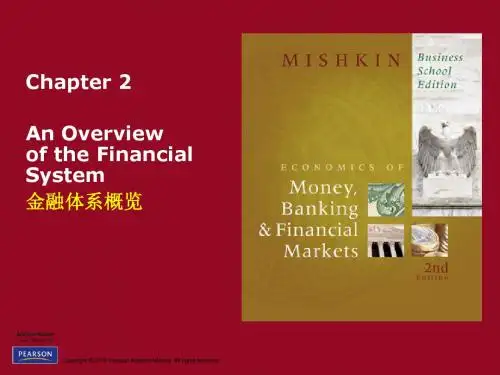

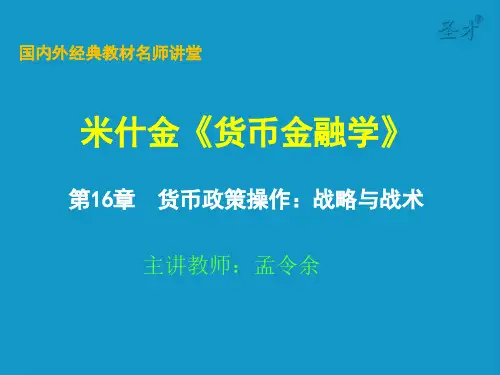
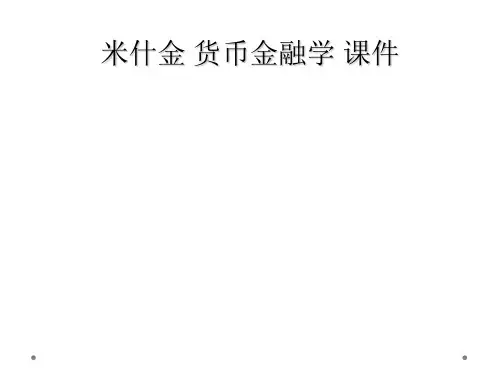
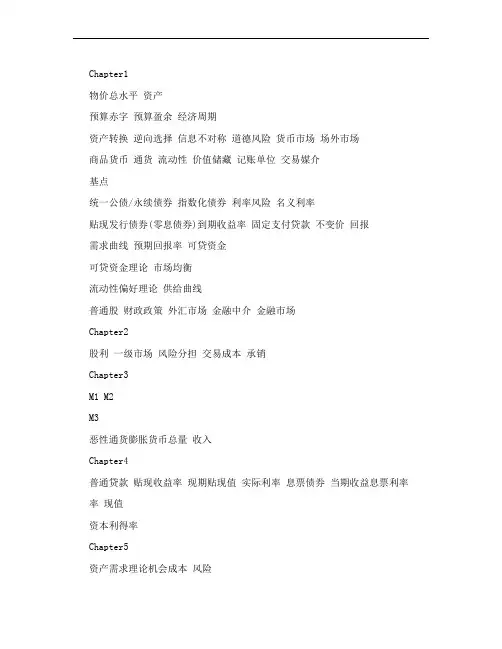
Chapter1物价总水平资产预算赤字预算盈余经济周期资产转换逆向选择信息不对称道德风险货币市场场外市场商品货币通货流动性价值储藏记账单位交易媒介基点统一公债/永续债券指数化债券利率风险名义利率贴现发行债券(零息债券)到期收益率固定支付贷款不变价回报需求曲线预期回报率可贷资金可贷资金理论市场均衡流动性偏好理论供给曲线普通股财政政策外汇市场金融中介金融市场Chapter2股利一级市场风险分担交易成本承销Chapter3M1 M2M3恶性通货膨胀货币总量收入Chapter4普通贷款贴现收益率现期贴现值实际利率息票债券当期收益息票利率率现值资本利得率Chapter5资产需求理论机会成本风险超额需求超额供给费雪效应Chapter6无违约风险债券预期理论翻转的收益率曲线流动性溢价理论期限优先理论适应性预期现金流量股利有效市场假定随机游走戈登增长模型市场基本面代理理论银行业恐慌现金流量抵押品债务萎缩金融危机搭便车鼓励相容啄食顺序假定资产管理资产负债表资本充足性管理补偿余额信用配给信用风险存款外流贴现贷款贴现率久期分析股本乘数超额准备金缺口分析利率风险风险溢价利率的风险结构分割市场理论利率的期限结构收益率曲线Chapter7最优预测未被利用的盈利机会理性预期剩余索取权有效资本市场理论推广的股利估值模型Chapter8委托-代理理论限制性条款担保债务高额核实成本资不抵债净值无担保债务风险投资公司Chapter9负债管理流动性管理贷款承诺贷款出售表外业务法定准备金率法定准备金准备金资产回报率股权回报率二级准备金 T账户库存现金Chapter10自动银行机自动提款机存款利率上限脱媒银行破产银行监管巴塞尔协议商誉年金封闭式基金共同保险免赔额固定受益型计划固定缴费型计划足额基金对冲基金美式期权套利买入期权货币互换欧式期权执行价格衍生金融工具金融期货合约金融期货期权远期合约避险远期利率合约利率互换公开市场操作目标独立性贴现率金融衍生工具期货合约证券化Chapter11杠杆比率表外业务监管套利监管宽容Chapter12初次公开发行(IPO)付佣基金非付佣基金开放式基金再保险适时发行不足额基金承销商Chapter13长头寸综合避险保证金盯市单个避险名义本金未平仓合约期权期权费卖出期权短头寸股票期权互换Chapter14工具独立性Chapter15超额准备金浮款高能货币基础货币多倍存款创造公开市场操作公开市场购买货币乘数防御性市场操作贴现窗口能动性公开市场操作联邦基金率工具指标中介指标国际政策协调自然失业率非加速型通货膨胀失业率升值资本流动性贬值有效汇率指数配额现汇率汇率汇率超调外汇市场国际收支平衡表资本账户固定汇率制度国际货币基金组织官方储备交易余额特别提款权非冲销性外汇干预国际收支危机经常账户公开市场出售法定准备金率法定准备金准备金简单存款乘数Chapter16非借入基础货币Chapter17最后贷款人再买回交易(反回购协议)一级交易商回购协议Chapter18操作指标菲利普斯曲线真实票据原则泰勒规则Chapter19远期汇率现汇交易关税远期交易利息平价条件一价定律货币中性购买力平价理论Chapter20外汇干预国际储备储备货币冲销性外汇干预世界银行布雷顿森林体系法定贬值金本位制度有管理的浮动制度法定升值货币局美元化铸币税交易方程式货币理论实际货币余额总需求总需求函数浮躁情绪自主性消费支出净出口存货投资消费函数可支配收入总需求曲线长期货币中性积极干预主义者总需求总需求曲线总供给总供给曲线浮躁情绪自我纠错机制供给冲击货币流通速度后遗效应凯恩斯主义者长期总供给曲线现代货币数量论耐用消费品支出贸易余额Chapter21名义锚时间一致性问题Chapter22流动性偏好理论货币数量论货币流通速度Chapter23支出乘数固定投资消费支出计划投资支出 LS曲线 LM曲线边际消费倾向政府支出Chapter24总产出的自然水平完全挤出Chapter25货币主义者完全挤出效应消费支出交易方程式政府支出非加速通货膨胀型失业率非积极干预主义者部分挤出效应计划投资支出真是经济周期理论总产出的自然率水平净出口Chapter26消费信用途径消费简化形式实证分析适应性政策单一货币增长规则成本推进型通货膨胀需求拉动型通货膨胀计量经济模型政策无效命题结构模型实证分析货币政策传导机制 Chapter27 政府预算约束债务货币化李嘉图平衡式政府印钞 Chapter28。

米什金《货币金融学》第16章重点知识1.货币政策的其他目标①高就业和产出稳定②经济增长③金融市场稳定④利率稳定⑤外汇市场稳定2.物价稳定是否应该作为最主要的货币政策目标物价稳定与货币政策的其他目标在长期内不存在不一致的问题。
但在短期内,物价稳定常常与高就业和利率稳定等目标发生冲突。
只要物价稳定是长期而非短期目标,中央银行就可以通过允许通货膨胀率在短期内偏离长期目标,实现减少产出波动的目的。
3.通货膨胀目标制以通货膨胀为指标包括几个方面:a)公布中期通货膨胀率目标数值;b)为达到产出稳定等其他目标,央行短期内拥有采取灵活政策的权力;c)要求货币政策决策者保持实质性的开放和透明。
①优点:a)通货膨胀指标允许货币当局使用所有可用的信息,而不仅仅是一个变量,实现了规则性和灵活性的高度统一;b)易于公众理解,透明度高;c)明确的通胀指标数值增强了中央银行的责信度,在很大程度上可以防止中央银行为了在短期内增加产出和就业而推行过分扩张的货币政策,从而降低了中央银行陷入时间不一致性陷阱的概率。
②缺点:a)信号时滞,通货膨胀指标不能及时向公众和市场发送关于货币政策动向的信号;b)过于僵化,给货币政策制定者规定了严格的规则,限制了他们对无法预见的情况做出反应的能力;c)增加产出的波动性,当通货膨胀率高于指标时,只关注通货膨胀可能导致过分紧缩的货币政策,进而可能导致较大的产出波动;d)低经济增长。
4.美联储“直接行动”的货币政策战略①优点:a)不依赖于货币和通货膨胀之间的稳定联系;b)有助于阻止过分扩张的货币政策,进而改善时间不一致问题;c)已被证明是成功的。
②“直接行动”的缺点:a)缺少透明度,导致了金融市场不必要的波动;b)十分依赖中央银行负责人的偏好、能力和可信赖性;违背了民主原则。
5.金融危机对于货币政策战略的启示①金融部门发展对于经济活动的意义超出了我们的认识。
金融震荡的逆向选择对经济活动的破坏作用远远超过我们的预期。
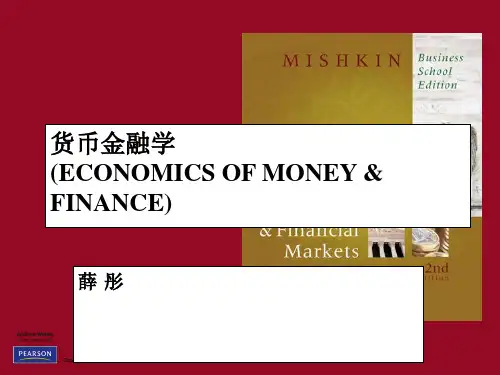
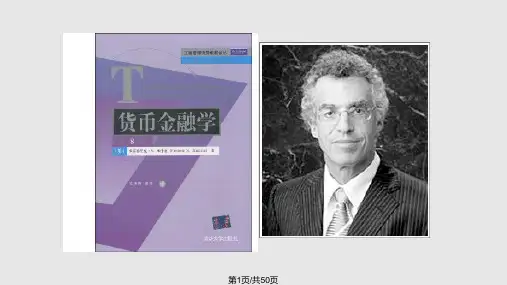


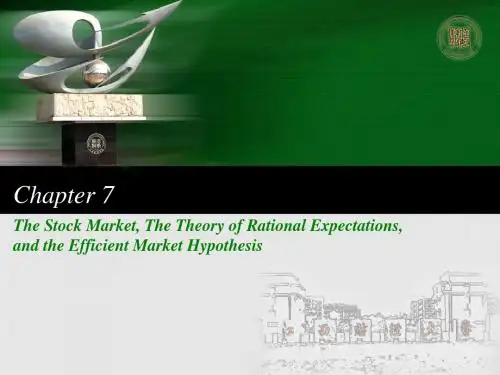
米什金货币金融学英文版习题答案chapter16英文习题Economics of Money, Banking, and Financial Markets, 11e, Global Edition (Mishkin) Chapter 16 Tools of Monetary Policy16.1 The Market for Reserves and the Federal Funds Rate1) The interest rate charged on overnight loans of reserves between banks is theA) prime rate.B) discount rate.C) federal funds rate.D) Treasury bill rate.Answer: CAACSB: Reflective Thinking2) The primary indicator of the Fed's stance on monetary policy isA) the discount rate.B) the federal funds rate.C) the growth rate of the monetary base.D) the growth rate of M2.Answer: BAACSB: Reflective Thinking3) The quantity of reserves demanded equalsA) required reserves plus borrowed reserves.B) excess reserves plus borrowed reserves.C) required reserves plus excess reserves.D) total reserves minus excess reserves.Answer: CAACSB: Reflective Thinking4) Everything else held constant, when the federal funds rate is ________ the interest rate paid on reserves, the quantity ofreserves demanded rises when the federal funds rate ________.A) above, risesB) above, fallsC) below, risesD) below, fallsAnswer: BAACSB: Analytical Thinking5) The opportunity cost of holding excess reserves is the federal funds rateA) minus the discount rate.B) plus the discount rate.C) plus the interest rate paid on excess reserves.D) minus the interest rate paid on excess reserves.Answer: DAACSB: Analytical Thinkingreserves, the demand curve for reserves isA) vertical.B) horizontal.C) positively sloped.D) negatively sloped.Answer: DAACSB: Analytical Thinking7) When the federal funds rate equals the interest rate paid on excess reservesA) the supply curve of reserves is vertical.B) the supply curve of reserves is horizontal.C) the demand curve for reserves is vertical.D) the demand curve for reserves is horizontal.Answer: DAACSB: Analytical Thinking8) The quantity of reserves supplied equalsA) nonborrowed reserves minus borrowed reserves.B) nonborrowed reserves plus borrowed reserves.C) required reserves plus borrowed reserves.D) total reserves minus required reserves.Answer: BAACSB: Reflective Thinking9) In the market for reserves, when the federal funds interest rate is below the discount rate, the supply curve of reserves isA) vertical.B) horizontal.C) positively sloped.D) negatively sloped.Answer: AAACSB: Reflective Thinking10) When the federal funds rate equals the discount rateA) the supply curve of reserves is vertical.B) the supply curve of reserves is horizontal.C) the demand curve for reserves is vertical.D) the demand curve for reserves is horizontal.Answer: BAACSB: Reflective Thinkingreserves, then an open market ________ the supply of reserves, raising the federal funds interest rate, everything else held constant.A) sale decreasesB) sale increasesC) purchase increasesD) purchase decreasesAnswer: A12) In the market for reserves, if the federal funds rate is above the interest rate paid on excess reserves, an open market purchase ________ the ________ of reserves which causes the federal funds rate to fall, everything else held constant.A) increases; supplyB) increases; demandC) decreases; supplyD) decreases; demandAnswer: AAACSB: Analytical Thinking13) In the market for reserves, if the federal funds rate is above the interest rate paid on excess reserves, an open market purchase ________ the supply of reserves and causes the federal funds interest rate to ________, everything else held constant.A) decreases; fallB) increases; fallC) increases; riseD) decreases; riseAnswer: BAACSB: Analytical Thinking14) In the market for reserves, if the federal funds rate is above the interest rate paid on excess reserves, an open market sale ________ the supply of reserves causing the federal funds rate to ________, everything else held constant.A) decreases; decreaseB) increases; decreaseC) increases; increaseD) decreases; increaseAnswer: Dreserves, an open market sale ________ the ________ of reserves, causing the federal funds rate to increase, everything else held constant.A) increases; supplyB) increases; demandC) decreases; supplyD) decreases; demandAnswer: CAACSB: Analytical Thinking16) In the market for reserves, a lower discount rateA) decreases the supply of reserves.B) increases the supply of reserves.C) lengthens the vertical section of the supply curve of reserves.D) shortens the vertical section of the supply curve of reserves.Answer: DAACSB: Analytical Thinking17) In the market for reserves, a lower interest rate paid on excess reservesA) decreases the supply of reserves.B) increases the supply of reserves.C) decreases the effective floor for the federal funds rate.D) increases the effective floor for the federal funds rate.Answer: CAACSB: Analytical Thinking18) Everything else held constant, in the market for reserves, when the federal funds rate is 3%, lowering the discount rate from 5% to 4%A) lowers the federal funds rate.B) raises the federal funds rate.C) has no effect on the federal funds rate.D) has an indeterminate effect on the federal funds rate.Answer: CAACSB: Analytical Thinking19) Everything else held constant, in the market for reserves, when the federal funds rate is 3%, increasing the interest rate paid on excess reserves from 1% to 2%A) lowers the federal funds rate.B) raises the federal funds rate.C) has no effect on the federal funds rate.D) has an indeterminate effect on the federal funds rate.Answer: CAACSB: Analytical Thinking20) Everything else held constant, in the market for reserves, when the federal funds rate is 5%, lowering the discount rate from 5% to 4%A) lowers the federal funds rate.B) raises the federal funds rate.C) has no effect on the federal funds rate.D) has an indeterminate effect on the federal funds rate.Answer: AAACSB: Analytical Thinking21) Everything else held constant, in the market for reserves, when the federal funds rate is 1%, increasing the interest rate paid on excess reserves from 1% to 2%A) lowers the federal funds rate.B) raises the federal funds rate.C) has no effect on the federal funds rate.D) has an indeterminate effect on the federal funds rate.Answer: BAACSB: Analytical Thinking22) Everything else held constant, in the market for reserves, when the federal funds rate is 3%, raising the discount rate from 5% to 6%A) lowers the federal funds rate.B) raises the federal funds rate.C) has no effect on the federal funds rate.D) has an indeterminate effect on the federal funds rate.Answer: CAACSB: Analytical Thinking23) Everything else held constant, in the market for reserves, when the federal funds rate is 3%, lowering the interest rate paid on excess reserves rate from 2% to 1%A) lowers the federal funds rate.B) raises the federal funds rate.C) has no effect on the federal funds rate.D) has an indeterminate effect on the federal funds rate.Answer: CAACSB: Analytical Thinking24) Everything else held constant, in the market for reserves, when the federal funds rate equals the discount rate, lowering the discount rateA) increases the federal funds rate.B) lowers the federal funds rate.C) has no effect on the federal funds rate.D) has an indeterminate effect of the federal funds rate.Answer: BAACSB: Analytical Thinking。